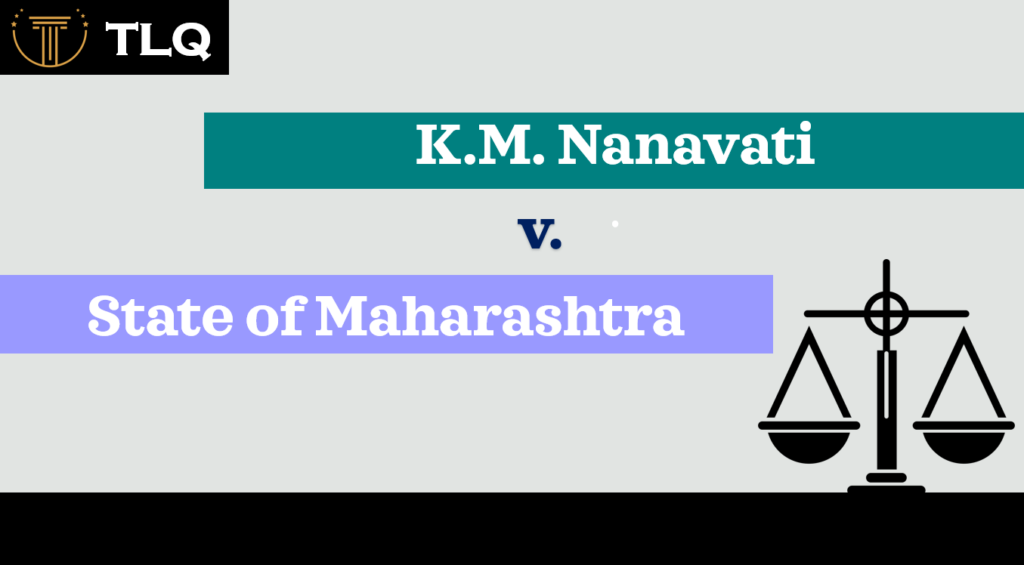Published On: 17th October, 2024
Authored By: Shreyansh Kuldeep Singh
Banaras Hindu University
The adverse effects of industrial and urban development on the environment and it’s subsequent degradation is no new news to the world. Today, industries form the crux of any developing or developed nation. They not only provide to their consumers their output products, but also are crucial in providing employment to the masses. It is for the same reason that ever since the industrial revolution started in the 18th century, no country around the world has ever been reluctant to industrialize itself. The reason being the same, these setups provide innumberable opportunities to the people to improve their lifestyles while also completing the demand of the masses and earning a decent profit for themselves. And this is why for about the last three centuries, industrialization around the world never really came to a halt. The more efficient industries a country has, the more is it’s significance around the world and the more is it rich and self-reliable. With globalization turning the world into a ‘small village’, industries around the world found this ‘village’ to be a market that would probably never saturate and whose demands will never be fulfilled, thus opening a whole new pandora’s box of supply and demand. It was seen an opportunity to an immense and never-ending run of profit in a business that would virtually never run out. But in the hindsight, what people did not realize or did not bother to even think about, were the side-effects of industrialization on the environment and it’s inhabitants, including humans themselves.
Over the years, events like increasing forest fires, melting of the snowcaps around the world, indiscriminate rise in sea-levels, loss of habitat of several flora and fauna- leading to them being endangered and in some cases, extinct, instances like the spread of minamata disease- which was widespread across japan, which led to several casualities and long term illness amongst the people due to consuming sea fish contaminated with mercury, the chernobyl nuclear disaster, which not only took a heavy toll on the lives of many humans, but also genetically destroyed many species of animals and plants over a huge part of the planet, the bhopal gas tragedy, the oleum gas leak tragedy, the great ozone hole, which was considered by many to be responsible for the increasing cases of skin cancer around the world, are just a few events to name, the likes of which have been destroying the environment and slowly turning the planet into something which in a few centuries is expected to be ‘inhabitable’.
There have been several international conventions and agreements which have been signed on with the sole motive to prevent this slow murder of the environment, like, the ramsar convention on wetlands, the Convention on International Trade in Endangered Species of Flora and Fauna (CITES), the Bonn convention on migratory species of wild animals, the Vienna convention, the Montreal protocol, the Kyoto protocol, the climate change conferences or COPs, which aim for the signatories to come together and work likewise for prevention of the environment and its interests. But these can never be enough for the purpose of protection of environment. Until these issues are addressed at community level, with necessary intervention from the judiciary, legislature and administration of a nation, these conventions, protocols and guidelines can never fulfil their purposes and will remain nothing but pieces of paper with no significance.
Environmental Public Interest Litigation(EPIL) is a primary tool through which damage to environment is confronted with the help of judiciary. First with the etymology of the word, Public Interest Litigation(PIL) can be understood as a way of approaching the judiciary regarding a matter of public importance wherein the individual approaching the bench is not required to have a locus standi, i.e. the individual taking the matter to the court is not required to necessarily be himself aggrieved from the matter being taken to question. This was not the stance of the judiciary earlier, as it was required for the petitioner to be aggrieved himself for his suit to be held maintainable. But gradually, this stance changed and the concept of PIL was slowly appreciated into Indian judiciary. The term ‘Public Interest Litigation’ was formally defined by Bhagwati J. and V.R. Krishna Iyer J. in the case of S.P. Gupta v Union of India as “a legal action initiated in a court of law for the enforcement of public interest or general interest in which the public or a class of the community have pecuniary interest or some interest by which their legal rights or liabilities are affected.”1 This definition perfectly sums up the whole point of the existence of PIL and its need. Over the period of time, Public Interest Litigation has established itself as a critical tool to address several serious issues around the country relating to pollution like M.C. Mehta v Union of India2, conditions of long term prisoners awaiting their trail, Hussainara Khatoon v State of Bihar3, procedure of arrests, D.K. Basu v State of West Bengal4, and a lot more. The Supreme Court and the High Courts of India using their powers enumerated in the constitution under article 32 and 226 respectively, hear such petitions pronounce their judgements thereafter.
The Indian Judiciary has done commendable work in passing several crucial judgements relating to PILs which were environmental in nature and dealt with certain important pollution and environment issues. Like, in the recent judgement of the Supreme Court in MK Ranjitsinh & ors. v Union of India5 in march 2024, pronounced by the Chief Justice of India Dr. DY Chandrachud, wherein the court recognised the ‘right against adverse effects of climate change’ as a fundamental right under article 21. The petitioner had filed a petition to the apex court under article 32 of the constitution for protection of two birds, namely the Great Indian Bustard and the Lesser Florican. The Great Indian Bustard(GIB) is native to the south and western part of the state of Rajasthan. The bird has been classified as ‘critically endangered’ by IUCN (International Union for Conservation of Nature) from 2011 to up until 2018, the latest assessment. The bird is also named in Part III of Schedule I of the Wild life (Protection) Act, 1972. The animals in this schedule are granted the highest form of protection from hunting owing to their status and vulnerability. The GIBs have been numbered to be between 50 and 249, now facing a significant and steady decline in their population for about the last couple of decades. The reasons for this have been identified as pollution, low reproduction rates, severe increase in competition with other species, loss of habitat due increasing human settlements in the grasslands, their residing in grasslands or in cavities in the soil and laying eggs there which are often destroyed by animals like mongoose, cows, etc. Another important reason, the one brought to the notice of the court, was the laying down of overhead transmission wires. The court keeping in mind the spirit of article 48-A, which provides for the state to protect and improve the environment of the country, and clause (g) of article 51-A, which imposes a fundamental duty on the citizens of the country to protect their environment, passed the above judgement as these two article are not enforeceable through the court of law. The court directed the union and the concerned ministers to implement the measures they presented before the court as the steps they have taken to conserve the GIB:-
- the implementation of the national GIB project as an ex-situ measure to provide the birds a conserved habitat and establishing insulating breeding centres in states where the birds do not currently reside. In-situ measures to be implemented in several sanctuaries around the country.
- development of predator-proof enclosures
- restoration of lost grasslands through local grass seed dissemination.
- elimination of undesirable species from the habitats of the birds
- satellite monitoring of the GIBs movements
- restoration of water points and watch towers
- celebrating the ‘National Bustard Day’
- raising awareness regarding the bustard and its conditions
- revival of pastures in lands as villages and settlements nearby depend on these grasslands for fodder
While passing the above judgement, the court cited the its previous judgement in the case of Virendra Gaur v State of Harayana6 (1995), where the apex court had stated that the right to have an atmosphere congenial to human existence is right to life under article 21.7 The court had cited the Stockholm Declaration of the United Nations Conference on the Human Environment. The petition was filed after a land alloted for purposes of better sanitation and ventilation of people was later leased out to a private individual for 99 years who then started construction of buildings on the land.
Another landmark judgement in an environmental public interest litigation is the judgement pronounced by the apex court in Municipal Council Ratlam v Vardichand.8 The residents of Madhya Pradesh town of Ratlam through a petition to the supreme court, had brought a suit against the municipal corporation of Ratlam under s.133 of Code of Criminal Procedure, 1973 and s.123 of MP Municipalities Act, 1961, which dealt with conditional order for removal of nuisance and municipality not providing facilities of sanitation and public conveniences for slum dwellers respectively. The people of the town had constantly been complaining about the pungent smell from the poorly maintained sewers, industrial waste from a nearby alcohol plant and several cases of open defecation. On approaching the municipality with these problems, they were told that the municipality had no funds to act on these issues and that the people had chosen to reside in the locality and thus, were not entitled to such remedies. The people then approached the magistrate who ordered the municipality to provide the necessary conveniences and maintain the damaged sewers and drainpipes. This order was appealed against in the High Court, which upheld the order, and then in the Supreme Court, which also upheld the order and rejected the contention of the municipality that a statutory body was not subject to s.133 of the CrPC. The court further held that the excuse given by the municipality that they did not have sufficient funds, did not absolve them of their liability and duty towards the people was no defence against s.123 of the MP Municipalities Act, 1961.
In Tarun Bharat Sangh, Alwar v Union of India & ors.9 the petitioner, an NGO, filed the petition under article 32 against the illegal mining activities being held the Sariska Tiger Reserve were harming the ecosystem and adversely affecting the tiger habitat. The apex court ordered commission of a committee under Justice M.L. Jain, which was tasked with identifying the tiger reserved areas and the illegal mines and whether the mines were actually operating in tiger reserved areas or not. Based on the committee’s findings, which indicated that the tiger reserved areas were not continuous but scattered and hence about 215 mines were completely under the Sariska Tiger Reserve, around 47 mines were partly in and partly out of the reserve. The court thereby ordered for the mining in mines within the tiger reserve to be stopped with immediate effect and the mines not completely in the reserve were directed to approach the state government, Forest department and mining department, for further instructions.
Rural Litigation and Entitlement Kendra v State of Uttar Pradesh10, is another landmark judgement under EPIL. Popularly known as the ‘Doon valley’ case, a letter was sent to the supreme court by the NGO, Rural Litigation and Entitlement Kendra, addressing the illegal mining activities taking place near Mussoorie-Dehradun region, which was adversely affecting the ecological balance of the area. The letter was then directed by the court to be registered as a petition under article 32 of the constitution. After appointing the Bhargav Committee and citing the report of an Expert Committee setup by the Union government in the same matter, the court initially passed an order, directing the committee to shut down the working of Category C and Category B mines on permanent basis. But, regarding a mines of Category A, that was not as close to the city as other ones, the court decided to leave the matter to the Government of India as the mine was producing limestone which was 97% pure, and shutting it down would result in the country having to buy limestone in foreign currency from outside the country. The apex court observed that the question of whether environmental protection should be placed above the economical needs of the country, should be left on the Government of India to decide, and not on judiciary. It also directed the Category A mine to submit its documents to one Bandhopadhyay Committee, which was to analyse whether the working of the mine would adversely affect the ecological balance of the area or not.
The name of MC Mehta can not be left out while discussing environmental Public Interest Litigation in India. He is an advocate who has over the years filed many important petitions in the Supreme Court regarding several environmental issues. In MC Mehta v Union of India&ors.11 (1988), the petition was filed against 89 respondents, including the government of India. It all started when by-stander smoker flunged a matchstick in river ganga, which lead to a fire that lasted for about 30 hours. The reason behind this was a layer of chemicals that floated over the river water due to industrial waste that was discharged into the river as the industries did not follow the general standards of waste disposal and had no filters to dilute the waste before discharging it into the river. The apex court rejected the contention of the respondents regarding the locus standi of the petitioner and held that he was a citizen who was interested in a matter of public importance and he did not need to further explain it. It observed that such chemicals in the river might cause water-borne diseases like Typhoid and Cholera. The court held the industries responsible for harm to the environment and also stated that only those industries should be licensed to carry out their activities who show that they can adequately manage the industrial waste and dispose it accordingly. The court also held the municipality responsible for issuing license to an industry without taking proper measures and rectifying the requirements for the same.12 Some other important cases filed by MC Mehta are MC Mehta v Union of India (1985)13, that dealt with the Oleum gas leak, and MC Mehta v Union of India (1986)14, which dealt with the discolouration of the Taj Mahal due to pollution and acid rain.
Conclusion
Environmental Public Interest Litigation (EPIL), as seen above, is the perfect tool to combat polltuion and the effects of climate change and is crucial in the fight to protect the environment as it allows for matters that though, exist at grassroot level, to be brought into the knowledge of concerned authorities or the judiciary, who can then take the necessary actions as required. The PILs have already been established as an impotant tool to attract the attention of the judiciary to matters of public and national importance, and the EPILs have further proved to be instrumental in the fight to protect the environment around the world.
References
- 1982(2)SCR 365
- 1988 AIR 1115
- 1979 AIR 1369
- 1997 (1) SCC 416
- AIRONLINE 2021 SC 209
- 1994 (6) SCR 78
- https://www.scribd.com/presentation/482307819/PPT-4-pptx
- AIR 1980 SC 1622
- AIR 1992 SC 514
- 1989 SCC 504
- 1988 AIR 1115
- https://www.legalserviceindia.com/legal/article-5748-m-c-mehta-v-s-union-of-india.html#google_vignette
- 1987 SCR (1) 819
- 1997 (2) SCC 353



